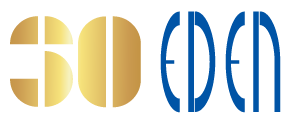When I was a young boy, I grew up in a very nice town in Belgium, with a great medieval history, called… yes, Bruges, or in Dutch, Brugge. For those speaking my mother tongue, this sounds like ‘brug’ or in plural ‘bruggen’ (in English: bridges). And honestly, when I was that young boy, I never doubted that the name of my city was derived from the bridges across the many water canals in the town. Later I learnt the real etymology, and it is not exactly true, but for sure it has to do with water, harbour and other constructions around.
Having said that, the theme of the EDEN conference in Bruges was ‘Connecting through Educational Technology’ and I immediately made the link with ‘bridges’, so the right conference in the right city. Now, months later, I still believe this is true. Let me tell you why.
It all started, as has become a tradition, with a PhD symposium. On a sunny Sunday, young PhD researchers, on the one hand, were discussing their topic, their approach, their first successes and their concerns through real intervision, while on the other hand, discussing their work with some PhD supervisors with a bit more academic track record. It was not difficult to see how new connections were made there.
Also in the keynote by Televic, the principal conference sponsor, a bridge was made by linking the academic and the commercial world, from spin-offs to multinationals. The message here was that companies are (or could be – always be a bit critical in this context) our friends in creating effective learning environments.
In another keynote, Steve Wheeler, a well-known digital scholar presented many examples of how the world of pedagogy and the world of technology are connected. At the same time, he challenged us with pushing the boundaries, e.g. with what he called ‘ungoogleable questions’, something where at first sight no bridge can be built, or can it?
And I can go on with a paper where students on both sides of the ocean were connected through technology, in this case, virtual reality, to learn about each other’s culture. Or with Jan Elen’s keynote about the hybrid classroom, where online and face-to-face students come together, where practice and research come together, or not (Jan talked about ‘instructional disobedience’). Or with the visit to the largest board game archive, where seriousness and fun went hand in hand. Or with the pop-up classroom, where early adopters and believers of the first hour reached out to the majority by means of demos and hands-on experiences. Or with a workshop on the European Digital Labour Market, bridging the digital skills gap between what employees can and what employers expect them to do.
This is just a sample of the countless examples where bridges were built, always connecting two sides in order to find a way to bring together what does not always seems to be combinable at first sight. It was a pleasure to make this happen in my own home town, where my personal family history came together with my professional work. As you can see, I cannot stop bridging 🙂 …
Wim Van Petegem

